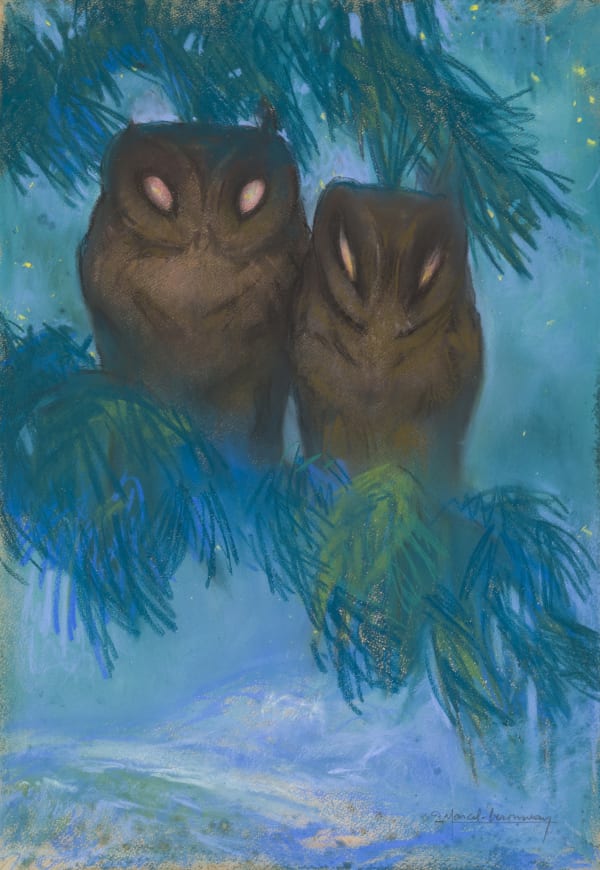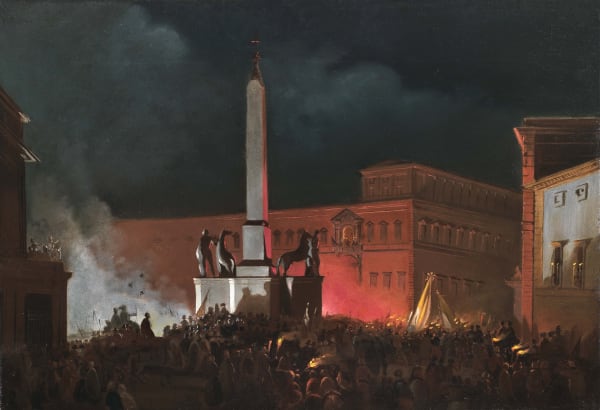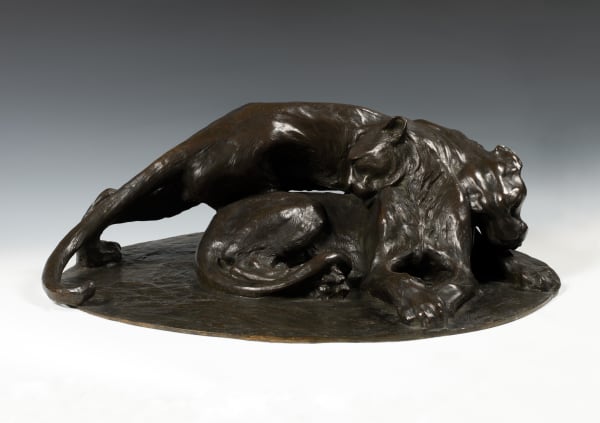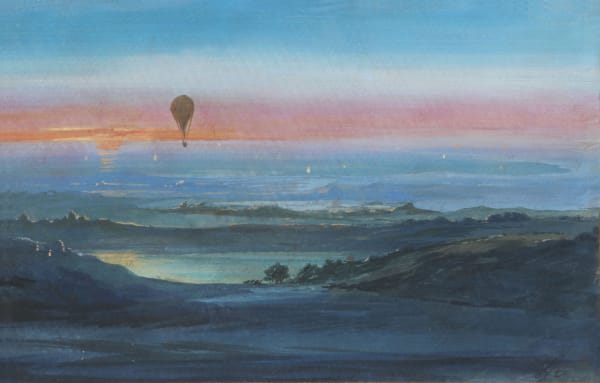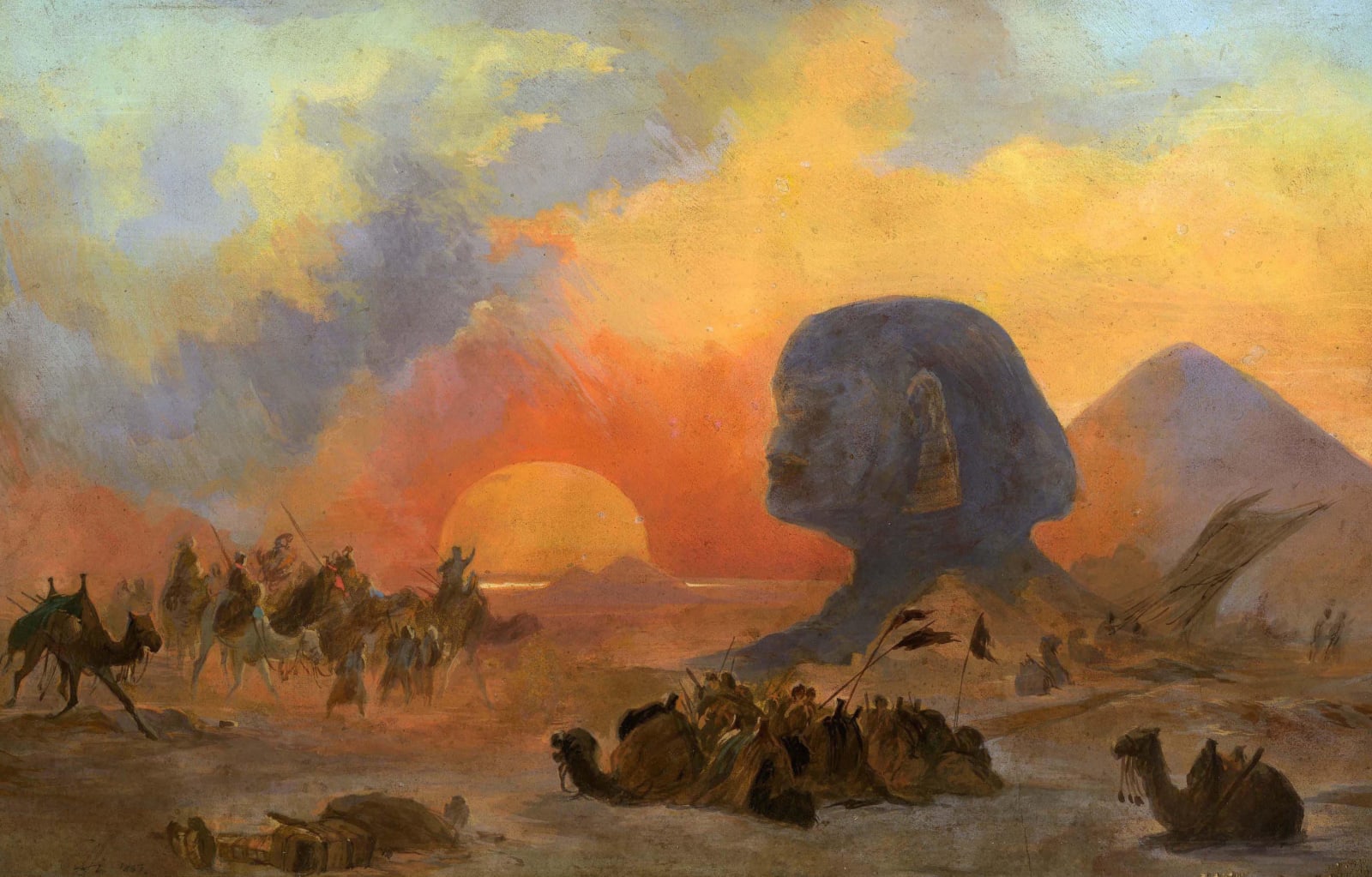
IPPOLITO CAFFI BELLUNO 1809-LISSA 1866
Literature
Reference literature:
Caffi. Luci del Mediterraneo, curated by Annalisa Scarpa, Rome, Museo di Roma – Palazzo Braschi, 15 February – 2 May 2006;
Ippolito Caffi. Tra Venezia e l’Oriente 1809-1866, curated by Annalisa Scarpa, Venice, Museo Correr 2016.
After spending time in Naples, Ippolito Caffi set out on a long journey in 1843 that was to take him to Athens, to Constantinople and finally to Cairo, where he travelled up the Nile, drawn and charmed by the beauty all around him. It was in the course of this meditative pilgrimage that Caffi produced a series of works which include the small card on display here, an initial idea or a “trial run” for the larger oil painting of the same subject now in the Galleria d’Arte Moderna di Ca’ Pesaro in Venice.
The entry for that painting in the catalogue of an exhibition entitled Ippolito Caffi. Luci del Mediterraneo, curated by Annalisa Scarpa and held in Belluno in 2005 and in Rome in 2006, tells us that: “On the back of the painting an autograph note reveals that… The scene is set close to Cairo, where the pyramids and the famous Sphynx carved out of the rock are situated. It depicts a caravan caught off its guard by the Simun wind – the camel and the dromedary are the first to suffer the effects of the suffocating air and thus they throw themselves to the ground and virtually bury their heads in the sand – Caffi “.
These few autograph lines by Caffi perfectly capture the Venetian artist’s interest in, and sensitivity towards, atmospheric change; and indeed he is well-known and much appreciated for his meticulous, fine and sophisticated brushwork which we might well describe as prodigious in its depiction of detail. In this picture of a storm, Caffi is so successful in imparting his magic touch that he makes us feel as though we are witnessing the event at first hand. Against a sky bursting with colour yet veiled by the whirling sand, the Sphynx appears almost troubled but steadfast in her majesty, while the strong, precise brushstrokes convey the unease, almost the fear of this fleeting but intense moment, that the Bedouin and the camels feel themselves and transmit to us, the observers.
-
 PIERRE AMÉDÉE MARCEL-BERONNEAUThe two Owls
PIERRE AMÉDÉE MARCEL-BERONNEAUThe two Owls -
 IPPOLITO CAFFIPope Pius IX's Nocturnal Benediction in Piazza del Quirinale, 1848
IPPOLITO CAFFIPope Pius IX's Nocturnal Benediction in Piazza del Quirinale, 1848 -
 ROMANO DAZZIBerber slave, 1929
ROMANO DAZZIBerber slave, 1929 -
 SIRIO TOFANARIThe Caress, 1909 c.
SIRIO TOFANARIThe Caress, 1909 c. -
 IPPOLITO CAFFIAscending over the Roman countryside in a hot air balloon (Lake of Albano), 1847
IPPOLITO CAFFIAscending over the Roman countryside in a hot air balloon (Lake of Albano), 1847 -
 Umberto BOCCIONIPortrait of a Young Girl, 1905 c.
Umberto BOCCIONIPortrait of a Young Girl, 1905 c.
Join the mailing list
Subscribe to our newsletter to receive all the news about exhibitions, fairs and new acquisitions!
